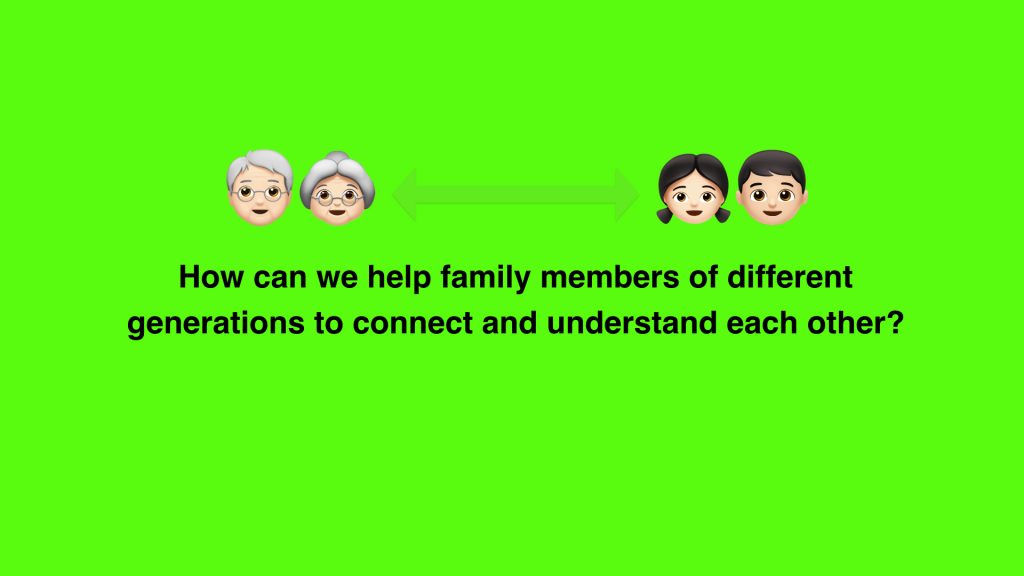According to the last intervention,I modified the questions on the cards in the game and increased the number of cards (the number of questions). I used the modified version to test another pair of participants. Because they think video conferencing inconvenient and awkward, I use remote voice to guide them to play the game, and asked them to take a photo during the game. Still the same as the previous process, first sign the permission for photography, then complete the questionnaire(1-2min), start the game(30min), interview(2-3min).
what typical family(family communication pattern)? The left one: pluralistic; The middle one:consensual; The right one: laissez faire.

Feedback:
The left family(pluralistic): Because we have a better relationship each other, and our family’s ideas are more open, I think this game including the problems in it is not a challenge for us. But it’s really good for me as an after-dinner entertainment activity, it’s good for us to enhance our relationship.
The middle family(consensual):There was a little awkwardness at the beginning of the game. We were not willing to express our thoughts, especially during the interactive session. After answering the question, we don’t extend the question too much, but the situation is alleviated after 15 minutes. Through this game, we also know each other’s thoughts and know where everyone’s bottom line is, which will help us avoid the next conflict.
The right family(laissez faire):The problem cards in the game are set up very well, most of which are trivial matters of life, but it is precisely because of these trivial matters of life that we can reflect our values, family views, etc. Most of the problems in the game we have encountered before and similar contradictions have occurred. In this game, we know each other’s thoughts better, and at the same time help us review our previous contradictions and find the reason of the contradictions. Let our relationship with each other go further. And every question cards has an explanation. When we hear the explanation, we understand why the other party chooses to do this instead of doing it like me.
Reflection:
I found that the analysis of the options on the question card is very important and an indispensable part, because when they choose different answers, they don’t agree with each other on the question, just like“why you chose A and didn’t choose B with me?” When they argue for a while and then look at the analysis of different options, they will better understand why the other party made this choice. During their argument, they can also discover the differences and commonalities between each other.
I think the shortcoming is that I should set up a card in this game session. Having the right to refuse to answer questions(three time). When encountering questions that I don’t want to answer, I can use this card so that they will not produce a lot of pressure, and enjoy the game process more.
So far, I have almost completed my intervention, although I have not yet seen whether the communication mode and intimacy between the participants will change, whether this intervention can really change them, or have an impact on them, But I think this process is long-term, and based on their feedback, I think there are potential changes. I believe that through this intervention, there will be more potential changes in the communication mode and intimacy between them.
